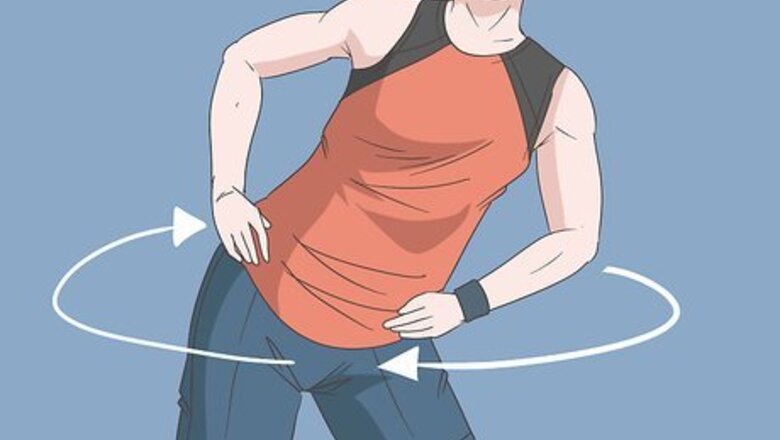
views
Executing a Full Planche
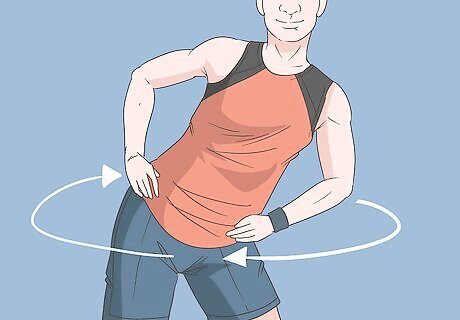
Stretch first. This will help your body feel limber and warmed up. And make it easier to planche. Proper stretching is a vital part of avoiding preventable injury. A planche is an advanced technique, so you'll need your body in its best order before you attempt it. Touch your toes. Keep your legs as straight as possible. Circle your wrists and hips. Stretch your arms by Crossing one arm over your chest and holding the elbow with the opposite hand; repeat on the other side.
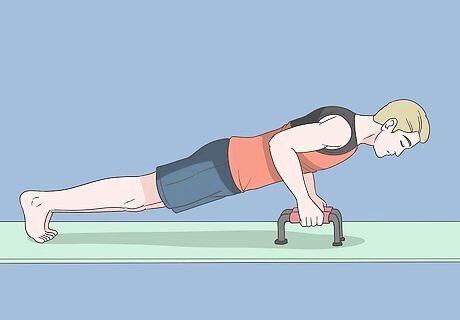
Get in position. Crouch between either push-up bars or parallel bars with your hands grasping the bars on either side. If you don't wish to perform the planche on bars, squat down on the floor with your hands planted on either side of you. Make sure your hands are planted a comfortable distance apart, so you'll be able to support your body adequately.
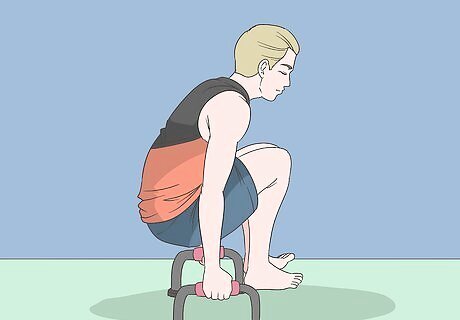
Plant your hands directly below your navel. Placement of your hands during a full planche is extremely important to its success. Before you lift yourself up, make sure your hands are planted facing forwards, roughly parallel to where your belly button will be when you lift yourself up. Experiment with different hand grips before you find one that works best for you.

Lean forward with your hands planted. With your hands facing forward, put them on the ground (or bars) and lean forward, placing more weight on your Keep your arms completely straight as your lean forward. It's good to continue picturing yourself in a push-up position. As you lean forward however, you should be putting far more pressure on your hands than you would in a push-up. Leaning forward is a great way to train towards a planche, as it will get you used to the increasing pressure on your hands and wrists.
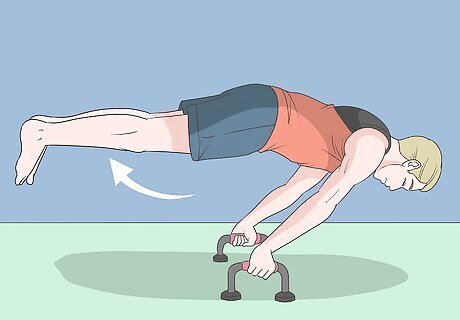
Push your body up with your hands. Lunge your lower body into the air with your hands and lie horizontally. All of your body's weight should be focused on your hands. Keep your body straight throughout. Because this technique takes so much upper body strength, it's unlikely that you'll be able to pull one off without training in increments first. A good way to imagine a planche is as if you were doing a push up where your feet aren't touching the ground.
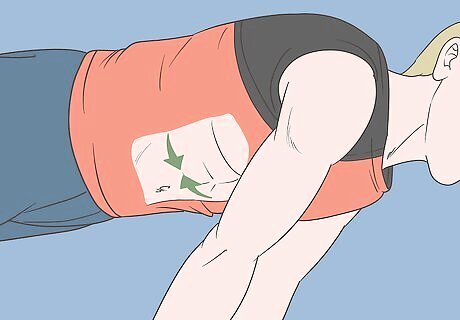
Tighten your abs. Tightening your body will help ensure your body's trunk is firm throughout the planche. Because proper balance is so important during the planche, you need to keep your body straight. Tightening in your abdominal muscles will help keep your body rigid.
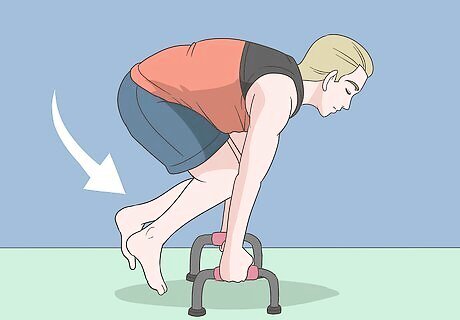
Hold and return slowly. Most professional gymnasts see 30 seconds as a good goal to hold the position for. When you complete the full planche, return yourself slowly to a resting "push up" position. It is fine if you cannot hold it for the full 30 seconds at first. Simply getting yourself into position is difficult enough. It is helpful to train yourself in increasing increments. For example, once you achieve the position, try to hold for 5 seconds. Once you're able to do that comfortably, aim for 10, and so on.
Training Your Skills
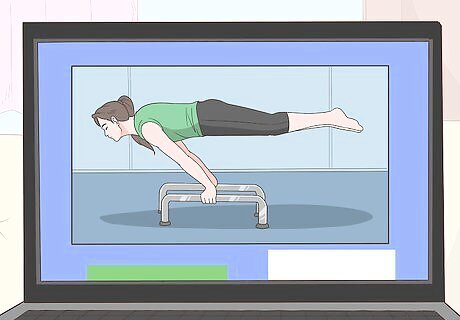
Watch professional planche videos. Carefully observing how professional gymnasts planche should give you inspiration and guidance on how to execute one. Keep an eye out for the particular motion and stance in which the professionals execute their planche. Having a firm visual reference will help you figure out the specifics yourself. It may look very easy when professionals planche, but it is, in fact, an extremely difficult process. Even professional gymnasts may take years to properly figure it out.

Work up to a planche using progressions. Because a full planche is such a difficult process, it's a good idea to train yourself up with considerably easier positions first. Although even the most basic planche is quite difficult to pull off, it's a more achievable goal to someone starting out. You should be able to hold each of these moves for at least 30 seconds before you try the next step in the process. Planching takes at least six months from the start of your training to being able to capably pull it off. You should keep this in mind and aim to be patient with your progressions.
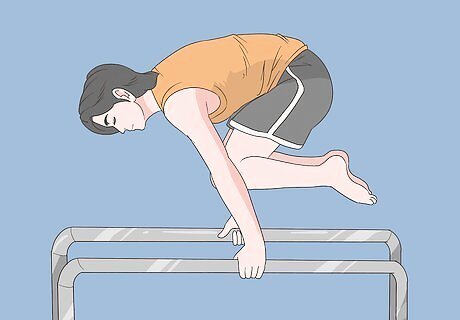
Push yourself up with a tucked planche. Using gymnastics bars planted on the ground, push yourself up. However, unlike a regular planche where your legs would be extended, keep your legs tucked in under your body. This will reduce the amount of strength and balance required to hold the planche. When you're comfortable with a tucked planche, an advanced tucked planche will push your limits. An advanced tucked planche differs from a regular tucked planche because your legs are extended in an L-shape at the knee. This should increase the difficulty, both in terms of strength and balance. Tucked planches are easier because the weight is more situated towards the area you're lifting from.
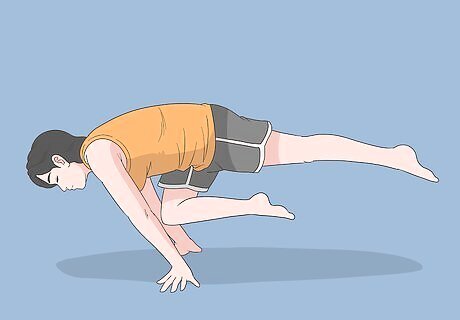
Planche with one leg. A one-legged planche gets you accustomed to extending your legs completely without taking on the full weight of them. As you push yourself upward, extend one leg outward while keeping the other tucked as with a tucked planche. You should alternate between legs. This will strengthen up the two sides of your body, and make them both ready for a full-blown planche.

Do a straddled planche. A straddled planche differs from the full planche in that both of your legs will be spread. Although you'll have the full body extension of a planche, the distribution of weight will be a bit easier to handle. Once you're able to consistently pull off straddled planches, you should be ready for a full-blown planche.
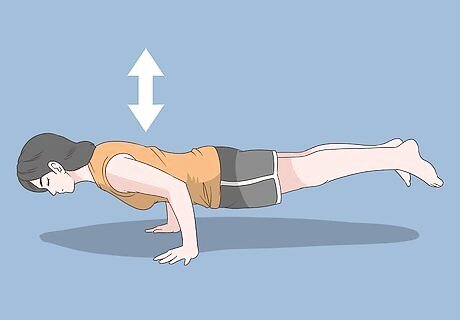
Attempt planche pushups. When you've mastered this elite exercise, kick it up a notch by doing pushups. In the planche position, bend your arms at the elbows to lower your body to the ground, then straighten your arms to come back up. Keep your torso, legs and toes in a straight line parallel to the ground the whole time.
Maximizing Your Body for Gymnastics
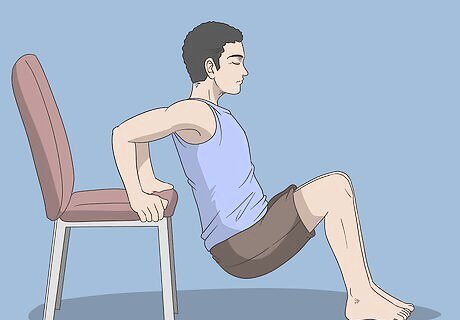
Trim fat on your body. It's simple math: the less weight you have on your body, the less exertion you'll need to keep your body straight and stable. Gymnasts benefit from keeping their body fat percentage as low as possible. Cut down on empty calories and focus on training cardio exercises when you're not busy with gymnastics.
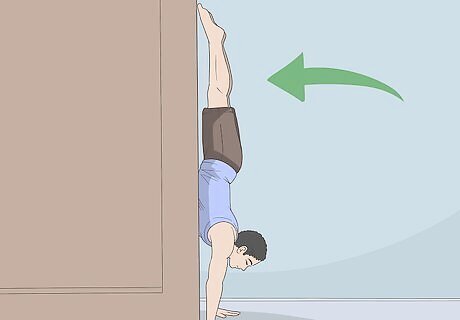
Practice handstands. Planching is all about balance and upper body strength. Handstands will help acclimate you to putting your body's pressure on your hands. This may be done with a wall-assisted handstand as well. Place your feet up on a wall, plant your hands on the ground, and step your feet up the wall to get you in a handstand position. Try to hold for at least 30 seconds. Getting someone to help you with handstands by holding your body in place is a great way to start if you're not used to gymnastics yet.

Eat a whole foods diet. Though it shouldn't come as a surprise to most, proper eating will have a major effect on any kind of athletics. This is especially true with gymnastics, where any amount of "empty calories" runs the risk of adding extra weight for you to carry around. Organic food is recommended because it maximizes the amount of nutrients you get in the same amount of food. Drink sufficient water. Keep a water bottle with you wherever you go.
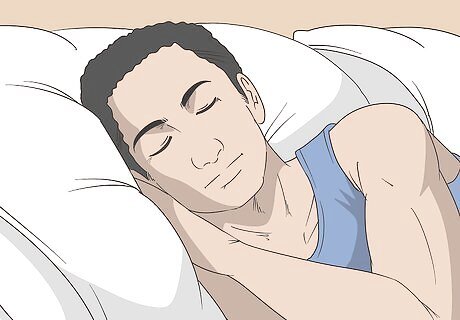
Get sufficient sleep. As with any physical function, losing out on sleep will be a death knell to your gymnastics efforts. Because a planche requires a high level of strength and balance, you should aim to get at least 7-9 hours each night. More sleep may be appropriate on nights before a big training day.
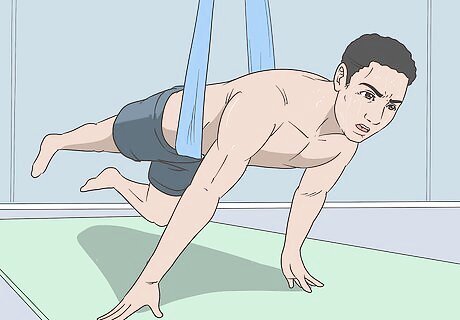
Be persistent. A perfect planche can take years to perfect. Even professional gymnasts have trouble with this. Start small, and work your way up slowly. Don't give up, and learn to identify small improvements in your form. This is vital to keeping your morale up.


















Comments
0 comment